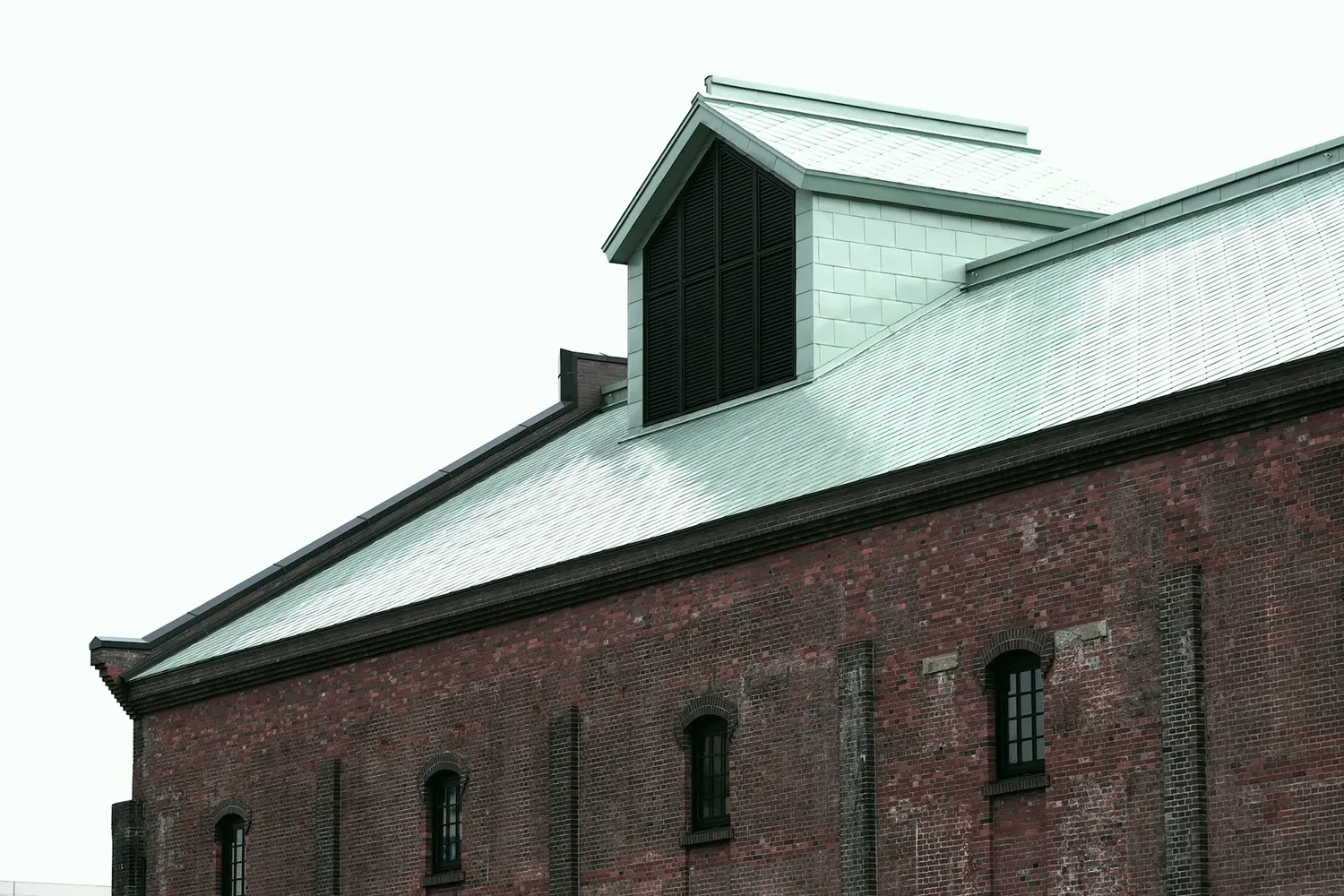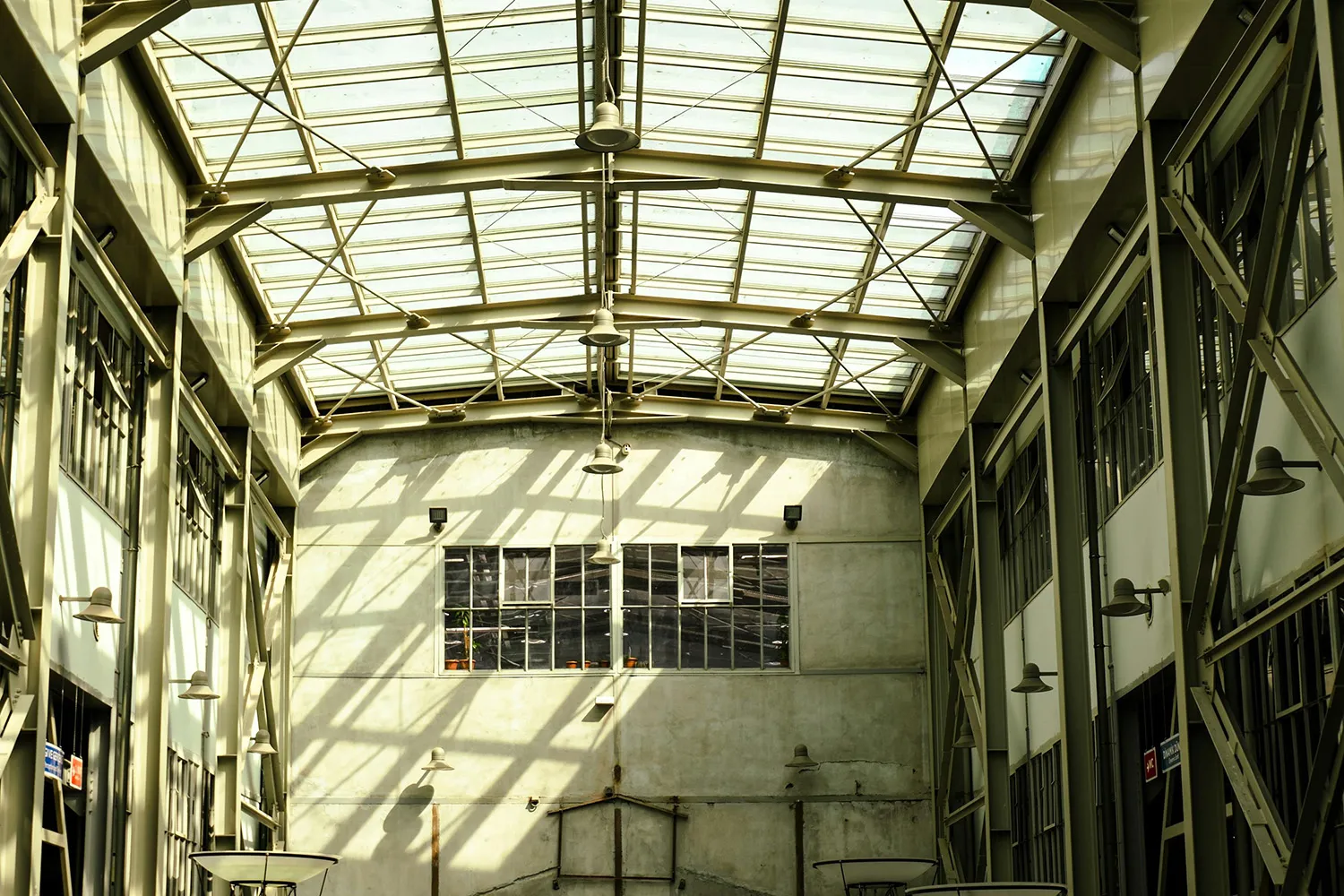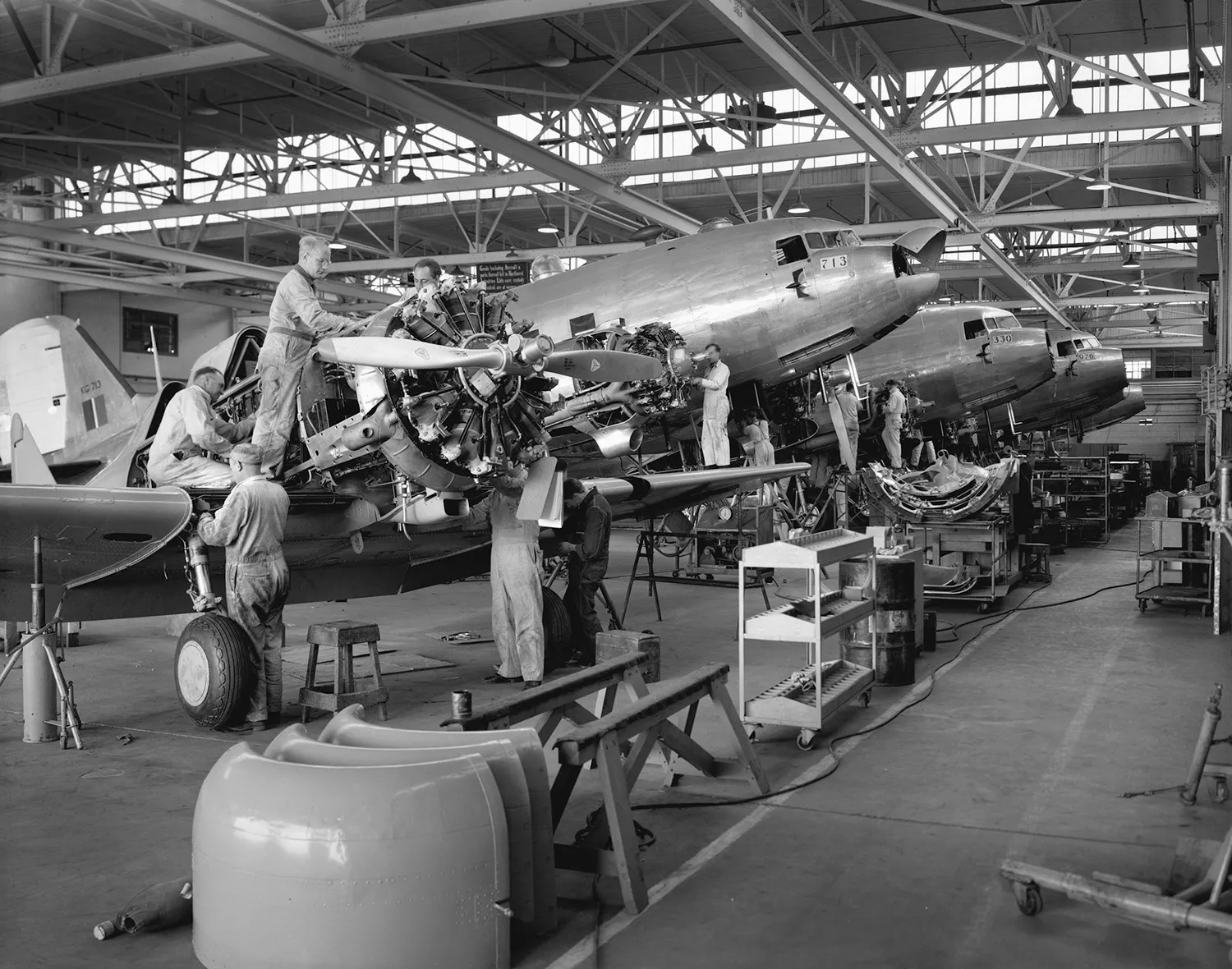Skylights in Industrial Spaces, England & U.S., 19th Century
In the 19th century, factories were being built on an unprecedented scale, creating a greater need for daylight to improve working conditions and sustain production. Skylights started to form as a recognized feature of industrial design, becoming common in factories with large halls and workshops where side windows often failed to provide enough light. These early skylights set the stage for the designs now seen in homes, retail spaces, and industrial buildings.

The Experience of England: From Tradition to Innovation
Manchester Central Station (1870), Birmingham Market Hall (1835), The Crystal Palace in London (1851), and Birmingham New Street Station (1854) are a few of the most notable instances of skylight utilization in England.
Skylights brightened the spacious hallways of Manchester Central Station, creating an environment that was both practical and welcoming for heavy train traffic. Similarly, Birmingham Market Hall combined skylights with large windows to fill the interior with natural light, essential for commercial activity in an enclosed space.
The Crystal Palace, built for London’s 1851 Great Exhibition, stood out for its enormous size and unusual use of glass and iron. Its interiors were filled with natural light, creating an airy atmosphere unlike most buildings of that era. The design relied on prefabricated sections, making assembly faster and showing fresh opportunities in industrial construction. By bringing so much daylight inside, it revealed how architecture could combine practical structure with a striking visual effect, inspiring many buildings that came after.
At Birmingham New Street Station, the largest iron-and-glass arch of the time was constructed, providing natural light to the platforms. This structure became one of the earliest large-scale examples of glazed roofing, a design concept that set the direction for future skylight design.
American Examples: From Textile Mills to Industrial Complexes

In the United States, skylight technologies were also advancing. One of the first large industrial complexes was Boott Cotton Mills in Lowell, Massachusetts (1830s–1850s). Roof lanterns and large windows were used here, and by the 1850s, shed roofs with skylights were introduced. Today, this complex is part of a museum showing American industrial history and the growing value placed on daylight.
The Lowell Machine Shop, also in Lowell, featured shed roofs with glazed bays that acted as skylight analogues. Fresh-air skylights here not only provided light but also essential ventilation in workshops with high heat and dust.
At the Colt Armory in Hartford, Connecticut (1855), skylights were used on a larger scale than ever before. The expansive roof structures filled the workspaces with steady daylight, cutting down the need for gas lamps. This approach made full use of daylight and soon spread to factories across America.
The Remington Arms Factory in Ilion, New York (1865), reflected the evolution of daylight factories—industrial buildings with elongated shed roofs and glass inserts. Early versions of modern fixed skylights helped optimize light flow and created more comfortable working conditions for the precision assembly of firearms.

Finally, Pullman Car Works in Chicago (1880s) was a factory town producing railcars. Its production buildings, equipped with large shed roofs oriented to the north, made efficient use of daylight as a key resource. This already demonstrated principles of rational light use that remain relevant today.
Benefits of Skylights
Examples from the past show that skylights offered many advantages: better visibility, less fatigue, and lower energy use. Fixed skylights gave steady illumination without leaks or heat loss. Fresh-air skylights added ventilation and greater comfort.
Modern technologies like roof-access windows build on these benefits and make maintenance easier. Ideas first explored in the 19th century continue to shape the skylights we see today. What began as a practical solution quickly became an architectural statement, influencing buildings around the world.
